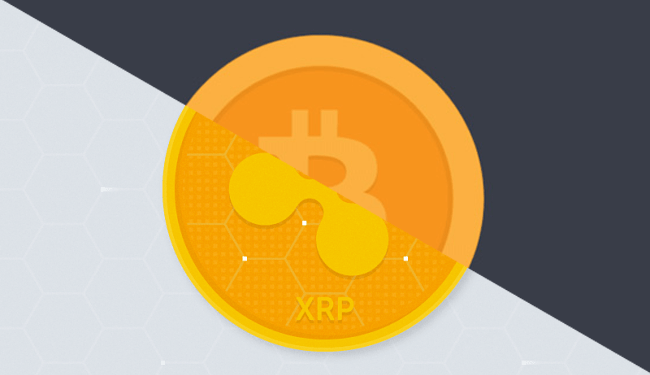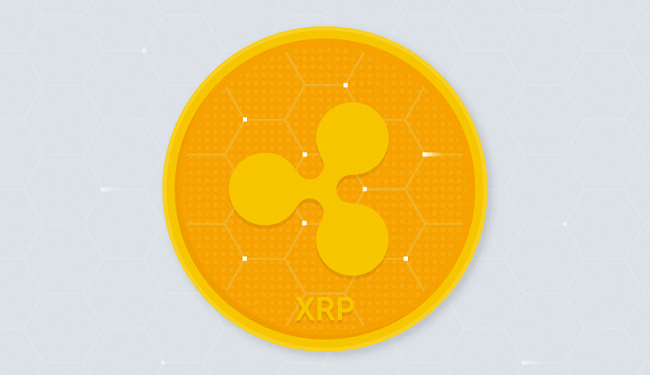The now famous Bitcoin whitepaper released in 2008 by Satoshi Nakamoto was the basis for the creation of a peer-to-peer electronic cash that has begun to disrupt financial markets. Bitcoin (BTC), when launched in 2009, became the very first cryptocurrency based on a peer-to-peer cryptographically secured network. And it exists without a central authority providing oversight and governance.
Anyone who owns Bitcoin can transact directly with anyone else, and all the transactions made with Bitcoin are indelibly recorded in a public ledger. That public ledger is known as a blockchain, and once a transaction is added to the blockchain its details can’t be altered in any way or erased.
Bitcoin uses a process called mining to verify transactions as valid and to secure the network. The mining is done by users who add the computing power of their computers to the network to solve increasingly complex cryptographic problems.
Then we have Ripple, which is a more recent arrival to the cryptocurrency scene. It was envisioned in 2012 when the fintech company Ripple (XRP) was started in San Francisco. Ripple was created as a means to faster, cheaper and more reliable bank-to-bank payments and international transfers.
The Ripple network accomplishes this using its native token – XRP.
XRP is the liquidity source for banks and payment providers who are sending cross-border payments. It links between various fiat currencies and allows for payments that settle in as little as four seconds and have a minimum transaction cost of 0.00001 XRP. Compare that with the SWIFT system that takes three days to settle a cross-border transfer, with charges that can exceed $45.
Ripple vs Bitcoin: In a Nutshell

How Bitcoin (BTC) Works: Bitcoin is a peer-to-peer decentralized digital currency that can be used by individual and entities to transfer value to each other, with all of the transactions recorded on a public ledger. It was created as a transactional currency to replace government issued fiat currencies.
How XRP (XRP) Works: XRP is used by payment providers, banks and corporations to make international transfers of value cheaper, faster and more reliable. It acts as a bridge between various fiat currencies to send funds across the Ripple network.
Key Similarities: XRP versus Bitcoin
While they are both considered cryptocurrencies and Bitcoin and XRP seem similar on the surface, when you dig deeper you’ll find they aren’t actually very similar at all. As I mentioned, they are both cryptocurrencies. And they both have an upper limit on the number of coins that will ever be created. And they are both major players in the cryptocurrency ecosystem.
That’s where the similarities end though, as these two cryptocurrencies were created for very different purposes.
Bitcoin was created as a transactional currency to replace fiat currencies, and it is meant to be used to pay for goods and services, and to transfer value from one user to another. By contrast, XRP was created for banks, corporations and other institutions to transfer money internationally.
And that brings us to a much meatier subject; the differences in Ripple versus Bitcoin.
Key Differences: XRP versus Bitcoin
While the similarities between Bitcoin and Ripple are few and broad based, the differences are more numerous and go far deeper. Below are six of the key differences in Ripple versus Bitcoin.
- Philosophy and Purpose
The vision that Satoshi Nakamoto had when he created Bitcoin was for a peer-to-peer currency that had no dependence on third-parties. He was looking to remove banks, financial institutions and any other companies from the transactional loop, allowing users to simply send money directly to each other.That makes Bitcoin as anti-bank as Ripple is pro-bank. Instead of removing banks from the payment loop, XRP works with the banks to ensure improved transactions and global transfers. That’s why some have called XRP “The banksters coin.” - Development
Bitcoin is completely decentralized and isn’t governed by any company, government or central organization. Instead it is maintained by a group of enthusiastic developers and any changes are made only by consensus of the entire Bitcoin community.Ripple is owned and developed by a registered company, which has investor and profit goals. The Ripple company was founded in 2012 and controls all aspects of the Ripple ecosystem. Ripple has offices in San Francisco, New York, London, Sydney, India, Singapore and Luxembourg, and more than 100 customers around the world. - Decentralization
Decentralization is the lack of control by any one entity and it is one of the key principles underlying everything for Bitcoin, and many other cryptocurrencies for that matter. Bitcoin was created to be as decentralized as possible, and the larger the community and usage grows, the more secure and stable the Bitcoin network becomes.By contrast Ripple is a privately held company offering its services to banks and other corporations on a fee basis. Its goal is to create profits, and it is highly centralized. It has often been criticized for this centralization, particularly over the 60 billion XRP that the Ripple company holds in escrow. - Coin Supply
Bitcoin has a cap of 21 million coins, and there will never be any more than that created. Currently about 17.37 million coins or roughly 83% of the total supply are circulating. The remaining coins will be brought into circulation via mining, with the last BTC expected to be mined in 2140.XRP has a much larger supply of 100 billion tokens, and since they were pre-mined they have all been created already. Roughly 60% of the total is held in escrow by the Ripple company, and they release coins as needed. The supply of XRP will slowly drop over time as a small amount of XRP is destroyed with each transaction. - Reserve Coins
Both Bitcoin and Ripple have coins held in reserve by their creators. Bitcoin’s founder Satoshi Nakamoto reportedly holds 980,000 BTC, although that can’t be proven since no one knows who Nakamoto is. But it has been hypothesized that the account holding the 980,000 BTC is almost certainly Nakamoto’s as the founder would have the easiest access to that many coins, and complete confidence in his creation.Ripple is actually fairly similar in that they also hold a large amount of XRP. In fact, they hold about 60 billion XRP, or 60% of the total supply. Some critics have said this is excessive, but the company does release some of that supply regularly, which differs from Bitcoin’s reserve that hasn’t seen any coins being released. - Fees and Transaction Times
Functionality in Bitcoin and Ripple also differs. Bitcoin transactions take roughly 10 minutes to confirm and processing times have increased to over 24 hours in times of extreme network congestion. Average transaction fees over the past 12 months have been around $0.50, but that is somewhat skewed by the peak of more than $50 per transaction hit in December 2017.Ripple is far less expensive and far faster. A Ripple transaction takes just 4 seconds to settle and costs less than $0.01. Ripple is also capable of handling up to 1,500 transactions per second, while Bitcoin is limited to 7 transactions per second.
Pros and Cons of Bitcoin and XRP
Bitcoin (BTC)

Pros: Bitcoin is the largest and best known cryptocurrency by far, having gained nearly mainstream recognition in its 10 year lifespan. It sets the bar for the entire cryptocurrency ecosystem and has perhaps the largest and most passionate community of any cryptocurrency.
Cons: Bitcoin is held back by slow and expensive transactions that limit its usefulness as a transactional currency. In transactional payment terms there are a number of cryptocurrencies that perform better than Bitcoin, some which were designed specifically for that purpose.
XRP (XRP)

Pros: Ripple is hitting the banks at their core and disrupting the international payments sector in the most efficient way possible. Ripple also boasts strong financial backing, and a growing list of partnerships with major global financial institutions. This should help Ripple continue to grow and increase its leverage.
Cons: Ripple will struggle to increase adoption from the financial community as it is expected to face increasing competition from the likes of SWIFT, Visa, and the banks themselves. Banks have huge infrastructures that were developed over decades to rely on existing payment and transfer systems, and getting them to change will be a difficult hurdle. Whether the largest global banks will adopt Ripple’s technology remains to be seen.
Spending BTC and XRP
Bitcoin was designed as a peer-to-peer digital currency and the spending options continue increasing, although they also remain somewhat limited due to the slow transaction times and high transaction fees of Bitcoin. Increasingly it is being used for large payments, such as those involving property, automobiles and luxury goods. It’s use as a transactional currency will likely remain limited as long as fees remain high.
Ripple was not designed as a transactional currency, but there are a small number of merchants online who accept Ripple. It’s a shame because with its fast transactions and small fees it’s actually a better choice for a transactional currency. But Ripple was designed as a means to make international money transfers (or even transfers of assets such as gold and oil), and that remains its primary use case. In fact, many cryptocurrency enthusiasts are hesitant to use Ripple at all because of its centralization and ties to traditional banking.
Investing in BTC and XRP
Investing in Bitcoin is simple since you can purchase it from so many cryptocurrency exchanges, or even from individuals. And you can use pretty much any payment method at all from cash to credit cards to online payment wallets.
Whether or not you want to purchase and invest in Bitcoin is another question. Yes, it remains the largest and oldest cryptocurrency, but in 2018 it lost over 60% of its value, and it has remained around the $6,500 level for some months. There are still questions about when and if it will rise again, or if it will drop to lower lows.
Ripple saw incredible growth in the latter part of 2017 and held its value fairly well in 2018, despite the broad based bear market in cryptocurrencies. In fact, as of November 2018 it is looking as if it will challenge Ethereum for the spot of second largest cryptocurrency by market capitalization.
Ripple continues to add new customers, and the increasing use of XRP tokens should help lift its price over time.
XRP might not be as easy to purchase as BTC, but it isn’t difficult since most cryptocurrency exchanges carry XRP as one of their offerings. The difficulty is you can’t typically purchase XRP with fiat currencies. Instead you first have to buy Ethereum or Bitcoin and then trade those for XRP.
As to whether or not you should invest in Ripple all I can say is to do your own research. Get a better understanding of the technology and use case, and make your own decision as to the growth potential for Ripple’s network and the XRP token.
Bitcoin vs Ripple: Conclusion
The question of Ripple vs Bitcoin might not be completely valid since they are based on different principles and philosophies, and have been created with different goals in mind. You’re not going to find Ripple being used in the same way as Bitcoin, but that doesn’t mean it isn’t worth considering as a crypto holding.
Ripple has some benefits, such as strong financial backing and a large number of partnerships. It has laid a good foundation in its bid to become a cornerstone of the global payments industry. And if it grows as large as the Ripple company is hoping, holders of XRP could benefit greatly.
And regarding Bitcoin, it doesn’t look as if it will be losing its grip as the largest and best-known cryptocurrency anytime soon. While it is struggling with scalability issues and transaction costs, developments are in the works to solve those issues. And it is a good store of value at this time, with increasing adoption from the global financial industry.